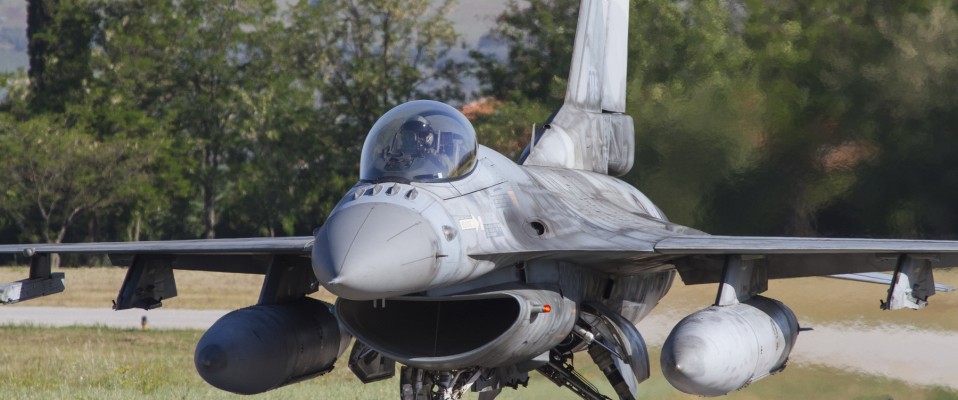Hellenic Vipers’ Nests – 111 Combat Wing
Report and photos by George Karavantos
February 11, 2018
The 111 Combat Wing constitutes the biggest nest in Greece for the Hellenic Vipers. Inside this base in Nea Anchialos, near Volos, there are three different Squadrons, all equipped with the first generation of the Greek F-16s.
Block 30s:
The story of the first Hellenic Vipers started in March 1985 when the Greek Government announced the purchase of 40 Fighting Falcons (34 F-16C and six F-16D) along with 40 other French Mirage 2000s.The French aircraft were following a tradition, after the previous purchase of the Mirage F-1s that wanted Greece to have a second supplier of military material but also to utilize a weapon that Turkey didn’t possess.
The agreement was signed in January 1987 under the name Peace Xenia I. These F-16s were all Block 30 aircraft, powered by the General Electric F110-GE-100 turbofan. The first aircraft (s/n 110) arrived in Greece in January of 1989 and deliveries lasted until January 1990. The other French aircraft had already been delivered since the spring of 1988. These two different types of fighter aircraft opened a new chapter for the HAF.
The first Squadron which acquired these new American fighters was 330 Squadron (Keraunos – Thunder). It was established on 9th January 1989 and in the beginning it was utilising the facilities of the existing 341 Sq. The first six pilots of the Squadron were sent to the 312th Tactical Fighter Training Squadron, at Luke AFB in Arizona, USA in order to receive the initial training of the type, while the technicians went to Fort Worth, Texas, at the facilities of the General Dynamics to receive their own training.
These six pilots returned to Greece and along with two other American instructors, started to train the remaining Greek pilots of 330 Squadron. This transition period was so intense that during only the first year of its operation, the aircraft of 330 Sq logged more than 2500 hrs! Since then, Greece received many other newer versions of F-16s and many other Greek Squadrons were equipped but 330 Squadron will always be the Squadron which received the first Greek Vipers!
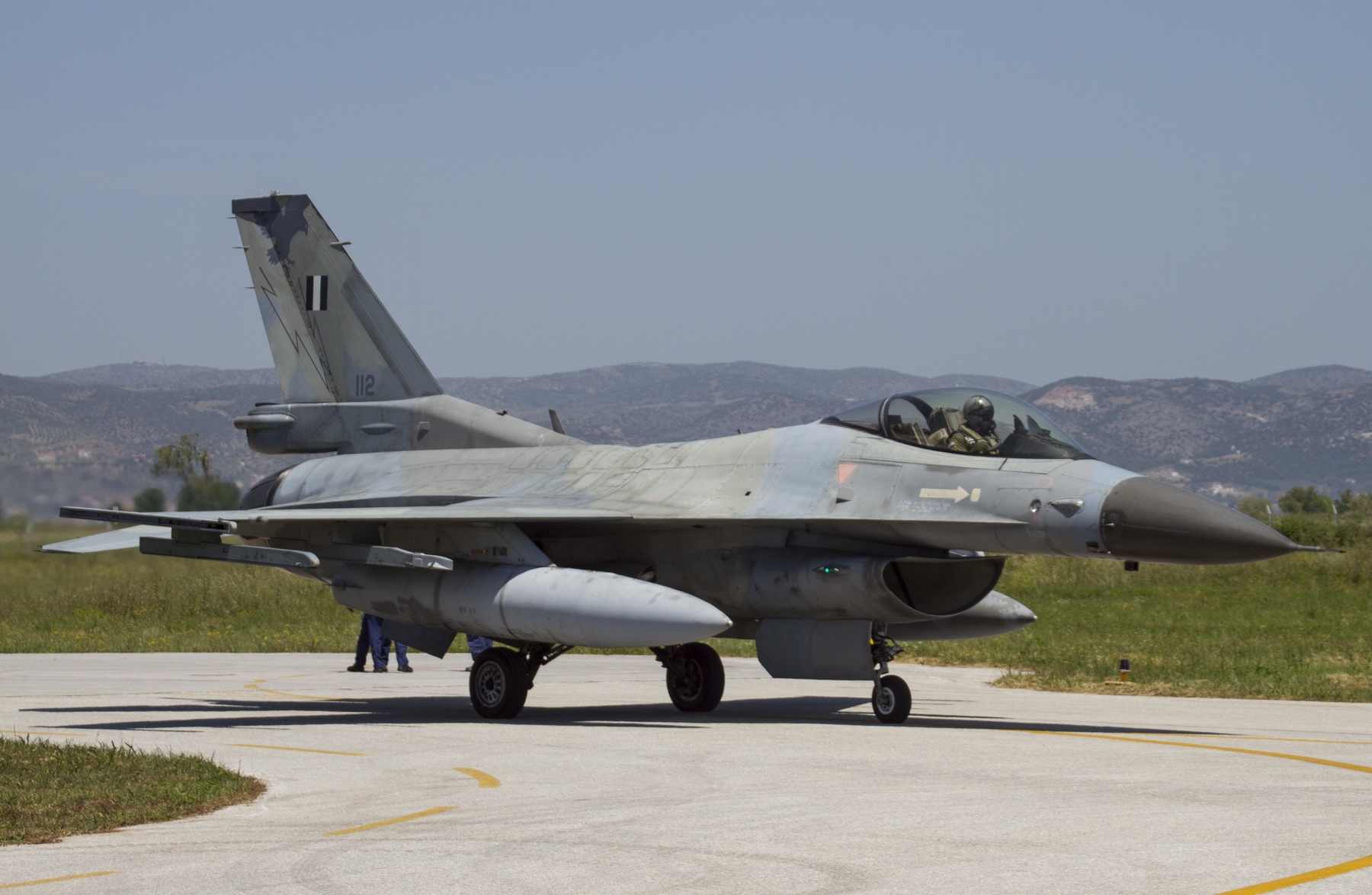
In the early 90s, a second F-16 Squadron was formed. 346 Squadron (Iason – Jason) received the remaining Block 30s of this first order. It was relocated at 110 CW in 1997 and finally it was disbanded in 2011. All the remaining Block 30s returned to 330 Squadron, which became the only Squadron in the inventory of the HAF which operated and still operates the older Block 30s.
In the beginning, the Squadron’s task was very difficult and demanding. Most of its pilots, despite their experience, were coming from second generation aircraft, which didn’t have the performance of the Fighting Falcon. Apart from that, the introduction of a different philosophy such as the digital cockpit and the fly-by-wire technology, made this task even more demanding.
But for 330 Sq, this challenge continued many years after the transition of this type. Due to the fact that the Squadron was the first to acquire these new aircraft, it certainly paid the price many times by offering its experienced personnel to newly founded Squadrons. Not only for the newer Block 50s, but many years later, for the new Block 52+s.
The biggest nightmare of the HAF at that time was the low safety record of other NATO countries which were already users of the type. Netherlands and Belgium, but also Norway and Denmark, countries that were using the type many years ago had already lost many aircraft. Even USAF had the same problem. For that reason, HAF, in close support with USAF, decided to write a new training manual and establish new training methods in order to avoid the common mistakes of its predecessors.
Accidents were not avoided. The first one was the hardest experience for the HAF. On 26th of November of 1992, an F-16 of lieutenant Brintak came so close to his “opponent” that his canopy hit the exhaust of a Mirage 2000, in 2vs2 dissimilar exercise named “Ierax” (Falcon). The unfortunate young pilot was killed instantly while the M2000 of lieutenant Bratsios was abandoned over the Aegean Sea. Thirty years later, that revolutionary technique that HAF used back then has resulted in a reduced number of losses, taking into account the demanding theatre of operations over the Aegean Sea.
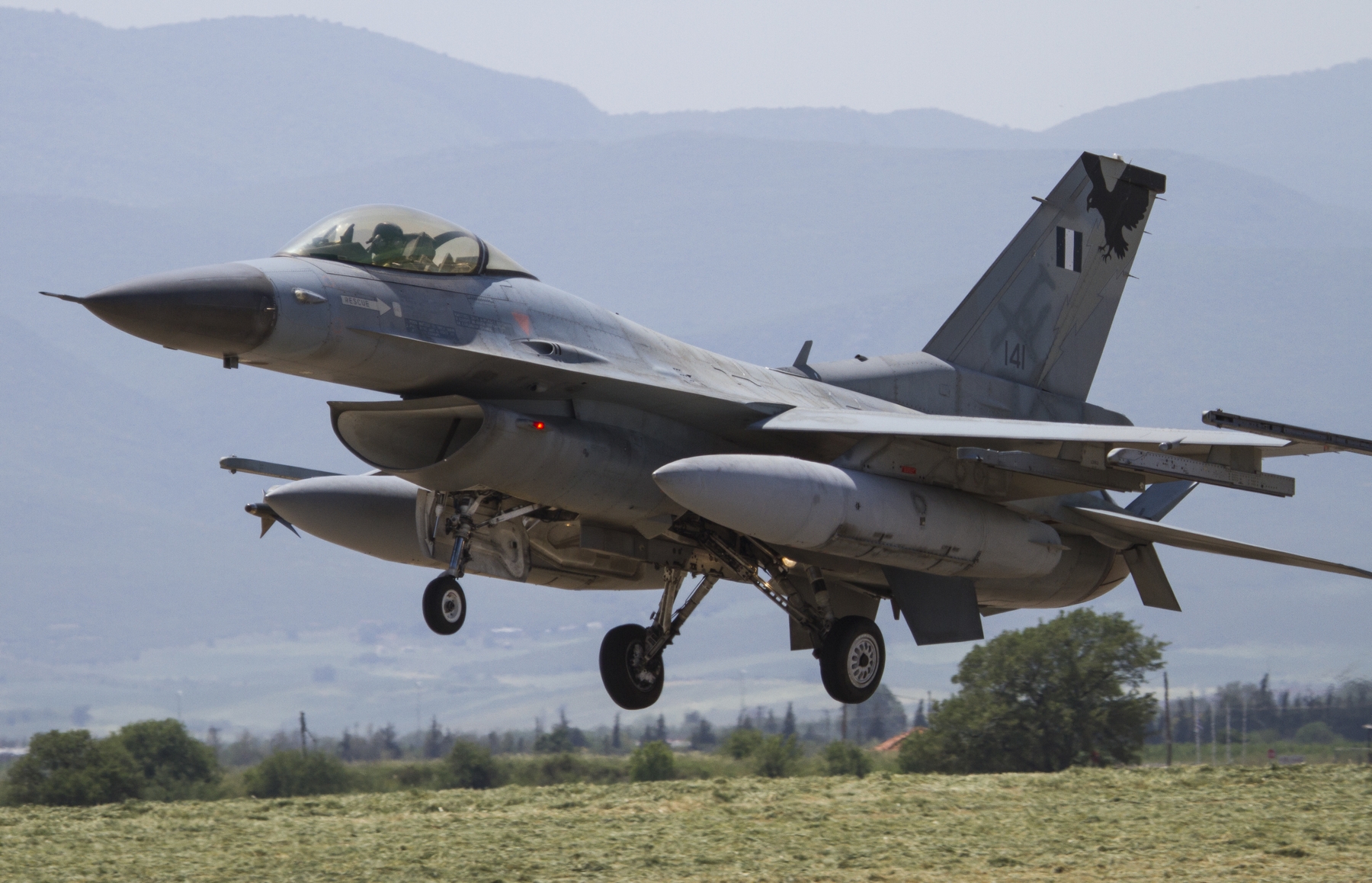
The Block 30s today:
30 years later the total number of the remaining Block 30s has been reduced to 32 aircraft, out of which 28 are single-seaters and the remaining 4 are two-seaters. All these aircraft belong nowadays to 330 Squadron. Still the number is quite big for only one Squadron to operate them.
The Squadron’s main role was and still is Air Defence. These first generation F-16s started patrolling the Aegean Sea on July 1990 and they never stopped ever since.
The main problem with these fighters nowadays is their age. Most aircraft have logged an average amount of 4000 hours under very demanding and stressful (for the fuselage) conditions since most of the time these aircraft were “dogfighting” over the Aegean Sea. The four F-16Ds have logged almost 50% more hours than the single-seaters. The problem with the F-16s had always been the structural fatigue. Some say that the F-16s are built with cracks and they spend the rest of their operational life trying to fix them. This is the price you pay when you transform an agile lightweight fighter to the heaviest single engine fighter in the history of aviation!
All the Block 30s have received a structural upgrade by the Hellenic Aerospace Industries under the name “Falcon Up”. This program started in September 1996. The first aircraft was handed over to the HAF on July 15th, 1997. Work included a major disassembly of the aircraft and the replacement of four major components of the fuselage. The aircraft were reinforced near the root of their wing. This programme prolonged the aircraft lifetime from 4000hrs to 8000hrs. Still, the Block 30s are really old aircraft not only in terms of their structural fatigue but in terms of their systems and their weaponry.
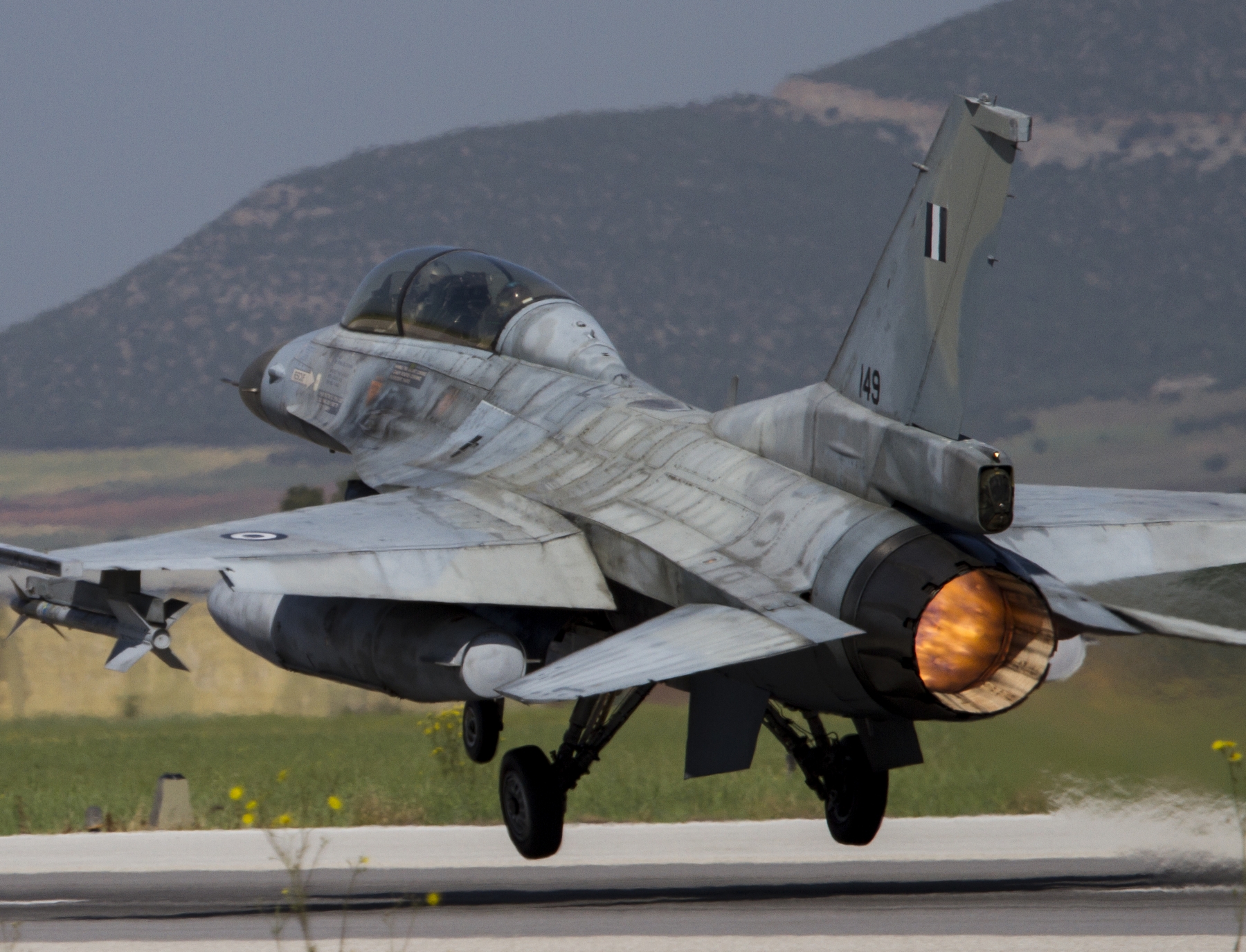
Block 50s:
347Sq (Perseas – Perseus):
In 1992, the Greek Government decided to continue on a second F-16 purchase under the name Peace Xenia II. The purchase was for 32 F-16C and another 8 F-16D, all of them Block 50s. The first Squadron destined to receive these new aircraft was 347Sq (Perseas – Perseus), which was re-established on 7th of July 1997. The Squadron was firstly established in 1977, initially under the command of 115CW in Souda in order to receive the newly acquired A-7H. It remained there for four months when it was relocated permanently at 110CW in Larissa. The Squadron had 19 Corsairs in its inventory and it kept them operationally until 1992, when it ceased its operation. The remaining aircraft were sent back to 115CW.
The first two F-16 Block 50 aircraft for Greece (a C and a D model) rolled out of the factory at Lockheed Martin Tactical Aircraft Systems on the same day, January 28th, 1997. The first four aircraft (two single-seaters 047 & 048 and two two-seaters 078 & 079) arrived in Volos on the 28th of July 1997. But the greatest asset of these new fighters was the purchase of the modern navigation & targeting system LANTIRN. HAF had ordered 24 navigation pods (AN/AAQ-13) and 24 targeting pods (AN-AAQ-14), opening a new chapter for its striking capabilities.
This LANTIRN system is comprised of two pods, one for navigation (left one) and one for targeting (the right one). Both can work autonomously. Both systems utilize Infra Red signal for their operation while the targeting pod can also offer laser guidance to the respective smart weapons that the aircraft is carrying.
The main role of the Squadron was and still is the utilization of this LANTIRN system during night time operations. In 2003 the Squadron received new weapons like guided LGB bombs and Maverick missiles enhancing its striking capabilities.
341 Squadron (Velos – Arrow):
The second Squadron to receive the remaining 20 Block 50s of the Peace Xenia II programme was 341 Squadron which was reformed in 1998. 341 Squadron can trace its history back in 1954 when it was formed at 112 CW (Elefsina Air Base) equipped with the F-86E aircraft. After a number of detachments to 111 CW (Nea Anchialos Air Base) and 114 CW (Tanagra Air Base), in 1960 it was finally moved back to 111 CW. In 1965 the Squadron’s fleet type was replaced by the extremely agile F-5 A/B, while maintaining its Day Interception (DI) role. In 1993, the Squadron was disbanded giving its remaining aircraft to 343 Squadron.
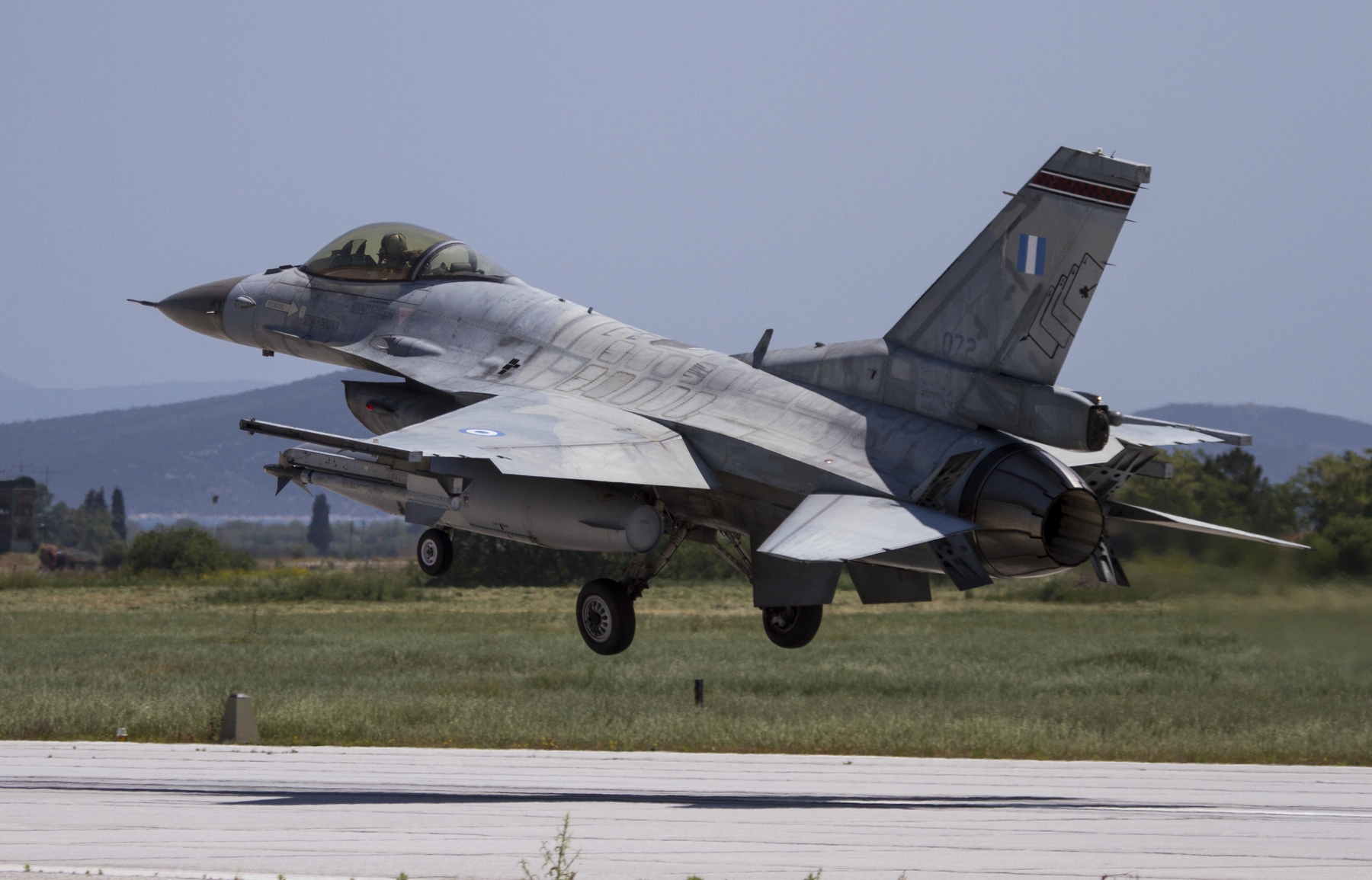
It is worth mentioning that between 1957 and 1965, the Greek Aerobatic Teams, ”Acro Team” and “Hellenic Flame”, were formed and operated by this Unit.
During the transition into the F-16 era, the Squadron opened also another new chapter for the HAF which was the Suppression of Enemy Air Defence (SEAD) after the purchase of the new AGM-88 HARM missile.
Around a year later it became one of the few Immediate Reaction Forces of NATO, having the ability to relocate its aircraft and personnel wherever needed within a period of five days! Another distinction of the Squadron was that it became the first Greek squadron which took part in an air to air refuelling exercise.
Despite its previous philosophy about air to air refuelling due to the small airspace over the Aegean Sea and the availability of many airports at the Greek islands (in fact all the M2000s were ordered without the refuelling probe and many years later they were all retrofitted with it), the HAF changed its philosophy in the early 2000s and the F-16s were the first which took advantage of their capability (since it cannot be removed) to take part into this kind of simulations.
341 Sq was also the first Squadron which adapted an emblem at the tails of its aircraft in the early 2000s. Squadrons 347 and 330 copied this technique. A few years later, the Cretan Squadrons duplicated the same tactic by depicting a horizontal flash of the squadron’s pattern at the top of the tailfin of each aircraft. Nowadays all the Greek Squadrons apply the same tactic. Only one Squadron, 336, which received the latest Falcons, hasn’t applied anything yet.
The main role of the Squadron nowadays is still the SEAD. Unlike many other Air Forces which consider SEAD aircraft as a “high-value asset”, meaning the aircraft which operate SEAD missions are being protected by other aircraft, in the HAF, this is considered “luxury”. The SEAD aircraft are all by themselves!
The AGM-88 HARM (High-speed Anti- Radiation Missile) is a supersonic air to ground weapon, designed to destroy enemy’s anti-aircraft systems equipped with radar. The AGM-88 HARM is still nowadays the standard weapon of the American forces for SEAD / DEAD (Suppression / Destruction of Enemy Air Defenses) but also for many other Air Arms across the Globe.
Nowadays, the remaining 38 Block 50s from Peace Xenia II (31 F-16C and 7 F-16D) are split equally between these two Squadrons.
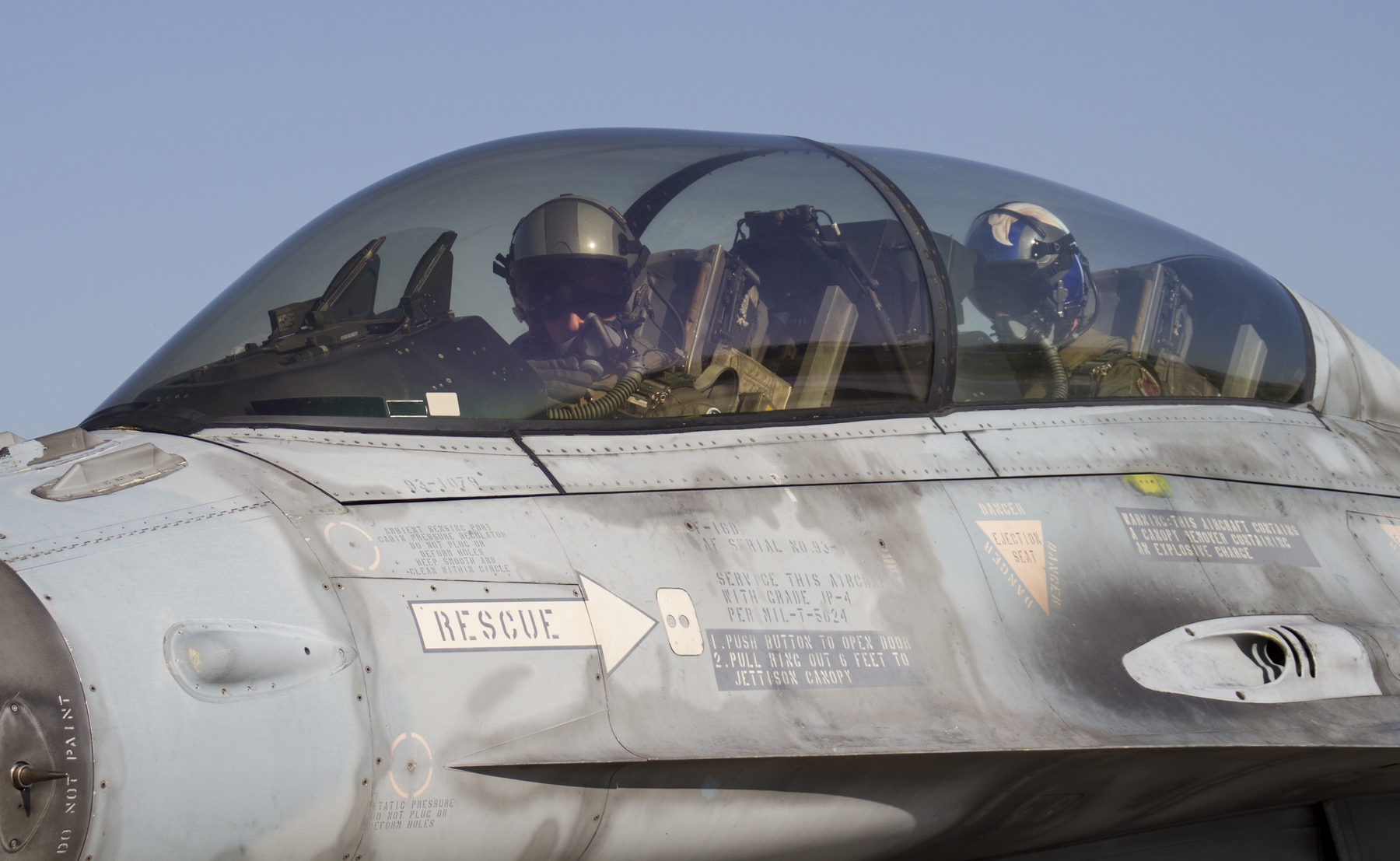
Aegean Ghost Camouflage:
The colour scheme of the Greek F-16s is known as “Ghost” or “Aegean Ghost” scheme and is one of the most interesting in modern military aviation. This distinctive camouflage was initially tested on one Mirage F-1CG. It was adopted on some F-5As for a short period of time just before their retirement, but more extensively used on all the F-4E Phantom IIs after their AUP upgrade. All the F-16s in the Hellenic service wear also this scheme.
On the Block 30s is just paint, but on the newer Block 50s, it’s a special coating which reduces the Radar Cross Section (RCS). This coating has, after all these years, resulted in a distinctive weathered camouflage.
Differences – Similarities:
All Greek Fighting Falcons, apart from their distinctive “Ghost” camouflage, have a tail fin root extension for the drag parachute. On this extension, there is also the probe of the ASPIS for the rearward detection of incoming missiles.
Apart from the Block 30s, the rest of the Hellenic F-16s feature the four antennas (also known as “bird-slicers”) for the AN/APX-113 IFF interrogator right in front of the canopy. The Block 30s are the only Greek F-16s which have an intercept light on the starboard side of the fuselage in front of the canopy. Also the two-seaters Block 30s are the only ones that don’t have HUD repeaters at the back seat.
These first two Blocks which are ending with “0” are equipped with the General Electric engine and are fitted with larger engine air intakes called Modular Common Inlet Duct. Apart from the intake, these different engines can also be distinguished from their exhaust nozzles. The GE F110-GE-129’s shorter and curved nozzles made from titanium compare to the P&W F-100-PW-229 engine which has longer and straight exhaust nozzles made from carbon fibre.
The Block 50s (along with the Block 52+s’), have a strengthened landing gear, in order to sustain higher weights. It is designed for up to 52,000 pounds of maximum takeoff gross weight. Also the position of the landing lights at the Block 30s is different. These lights are located at the main gear struts, while at the newer Blocks, these lights are located at the nose gear.

Epilogue:
The 111CW, along with the 114CW, is closely related to the introduction of the first third generation aircraft of the HAF. The Squadrons on both Combat Wings were established in the late 80’s for the acceptance of the new fighter types, F-16 and Mirage 2000. During the last 40 years, 114CW, was and still is the nest of the French aircraft.
Concerning the history of the American fighter, 111 CW will always be the place where everything started. For the Mirage 2000, the future looks short and vague but for the F-16 there is a huge possibility that this fighter will extend its service life wearing the blue roundels for years to come…
The Story of the 149:
This aircraft had an odd incident back on June the 6th, 1995. While taxiing, the engine engaged full afterburner and as a result the aircraft left the taxiway, hit a tree and burst into flames. The aircraft was 2/3 damaged, but it was finally sent to the 649th CLSS of the Hill AFB. This Squadron is the only one in the US which is specialized in recovering heavily damaged aircraft. This project was one of the toughest ones. The aircraft had received so extensive damages that became necessary to change most of its systems. The aircraft finally returned to service on the 12th of October 2001, while the whole repair work reached the total amount of 5 million dollars!
BLOCK 30s
BLOCK 50s
George Karavantos is from Athens, Greece. His love with military aviation started at the age of 10 when he accidentally read a Greek aviation magazine. Since then, he never stopped reading about fighter aircraft and taking photos of them. He was too tall to become a fighter pilot, so he became an airline pilot. Nowadays he is a Captain and a Flight Instructor on the A320 aircraft. Despite his profession, military aviation will always be his obsession.


